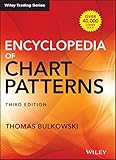
Sentiment: Bearish
Direction: Reversal or Continuation
What Is The Descending Triangle Chart Pattern?
A Descending Triangle is a bearish chart pattern, commonly found either at the top of a trend as a reversal pattern or mid-trend as a continuation pattern.
It consists of a downward sloping resitance line and a horizontal support line.
How To Identify The Descending Triangle Pattern?
The price is trapped between two converging trendlines. The lower trendline extends along a horizontal support level, which repeatedly defends further breakdown. The upper trendline slopes down, limiting the price peaks to consecutive lower highs (Figure 1).
For the triangle pattern to form, the price must touch one trendline at least three times and the other at least twice. Developing price action must fill out the pattern.
Trading volume decreases as the pattern develops. A breakout typically occurs about two-thirds of the way through the triangle, before the apex (Figure 1).

What Is The Psychology Behind the Descending Triangle Pattern?
The Descending Triangle is a bearish formation that reveals the market’s changing psychology.
Defined by a static support line and a declining trendline converging downward, this pattern shows buyers struggling to lift prices as the junction nears. A series of lower peaks materializes, betraying the weakening optimism.
Ultimately the price punctures the support in a climactic breakdown, portending a trend reversal and new bearish trajectory.
This pattern reflects the shifting mindset of market participants. As lower prices loom ahead, sellers turn emboldened, willing to unload at decreasing levels. Meanwhile, buyers turn skittish, hesitant to bid up prices when danger lurks below.
The swelling supply and shrinking demand reaches its tipping point when the price decisively fractures support. Psychology morphs from cautious optimism to resigned pessimism.
How To Trade The Descending Triangle Pattern?
To capitalize on the Descending Triangle, traders bide their time until the price decisively fractures support with a surge of volume.
Ideally, trading activity spikes as sellers overwhelm buyers, validating the authenticity of the move.
Once the price penetrates support, traders may initiate short positions, placing stop losses above the upper trend line to limit risk (Figure 2).

Profit objectives can be set based on the pattern’s height, anticipating the price will travel a similar distance post-breakdown.
Alternatively, traders may wait for a throwback to the breached support level before entering shorts. This provides closer entries and tighter stops, but risks missing initial profits.
Weigh these approaches against your risk appetite and style. Market conditions should also impact the decision-making process.
Keep in mind the triangle may produce head fakes, with prices quickly reclaiming support. Employ the use of technical indicators and chart tools to confirm validity before acting. Access these tools at TradingView.
Stay alert, as false moves abound. But when volume aligns with the price action, be prepared to strike.

Descending Triangle Performance Expectations Explained
While identified primarily as a bearish chart pattern, there is roughly a 50/50 chance of a break down versus an upward breakout, making it more neutral than bearish.
According to Thomas Bulkowski’s Encyclopedia of Chart Patterns, the pattern breaks upward 53% of the time in bull markets, and breaks down 58% of the time in bear markets. This is where the pattern gets its bearish reputation from.
A breakout should appear prior to 65% towards the triangle’s apex. Pullbacks happen around 58% of the time in a bullish market, and 61% in a bearish market.
To find potential targets, measure from the highest peak to horizontal trend line. Apply the results to the point of break down or breakout (Figure 3). Target objectives are reached around 50% of the time, though it’s as much as 64% in a bull market upward breakout (Figure 4).



